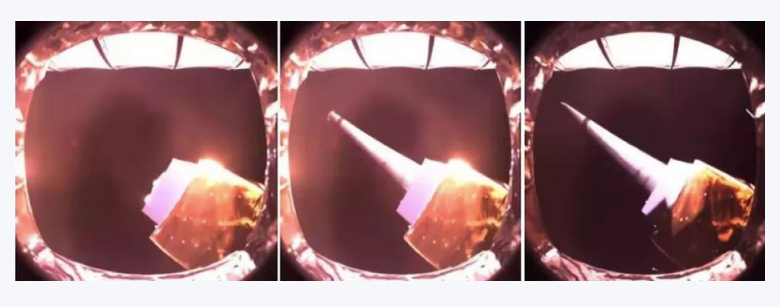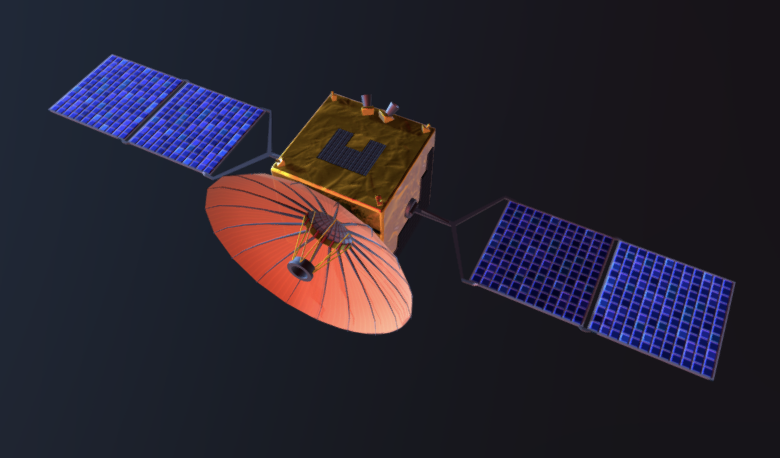The Queqiao relay satellite that China sent to the Moon as part of its fourth lunar mission, Chang’e 4, has been repurposed as a radio telescope for a novel Dutch/Chinese collaboration.
Meaning "magpie bridge" in Chinese, Queqiao, the once communications relay satellite stationed on the far side of the Moon is now the Netherlands-China Low Frequency Explorer (NCLE); a prototype radio telescope with a mission to detect electromagnetic signals from just after the Big Bang.
NCLE has been hanging around in space for over a year now, waiting for its duties with Chang’e 4 to finish, so that it could unfurl its antennas and start searching for signals that have been permeating through space for over 13 billion years.
“We are finally in business and have a radio-astronomy instrument of Dutch origin in space. The team has worked incredibly hard, and the first data will reveal how well the instrument truly performs,” says Heino Falcke of Radboud University and scientific leader of the Dutch-Chinese radio telescope.
NCLE’s position is perfectly placed to pick up weak radio signals from a period cosmologists call the Dark Ages; an epoch thought to have lasted several hundred million years before the first stars were born.
Its “dark” description is poignant both figuratively and literally, as not only were the skies not ablaze with light from the luminous stars and galaxies we see today, but cosmologists don’t know a whole lot about what happened in this era - they are quite literally in the dark about what could have been occurring.
It is widely accepted that most of the matter in the cosmos at this stage was dark matter with the scant remaining ordinary matter comprised largely of neutral hydrogen and helium. However, observing what really happened 300 million years to one billion years after the Big Bang poses many challenges for astronomers as these ancient light signals are blocked by the Earth’s atmosphere.
However, after launch Queqiao/NCLE was put into an Earth-Moon Lagrange 2 (L2) halo orbit, a point about 450,000 kilometers away from Earth on the lunar farside and as this location is far above the Earth's ionosphere, the telescope is better positioned than a ground-based facility to search for low-frequency radio emissions from the early Universe.
But it hasn’t all been plain sailing for NCLE. The telescope’s extended wait meant that problems arose with the antennas as they began to unfurl them.
“The launch eighteen months ago was already extremely thrilling, of course, but we had no hand in it. Now that our own instrument was concerned, things were rather different,” said Eric Bertels from the antenna manufacturer ISISpace who was in China last week to prepare the unfolding of the antennas.
The unfolding didn’t go quite as smoothy as the Dutch team hoped, so progress for the time being has been halted. Instead the team are collecting data with shorter than anticipated antennas and they might try again in the near future to unfold them further.
The instrument is still sensitive to signals from around 800 million years after the Big Bang with these shorter antennas, though once unfolded to their full length, they will be able to capture signals from just after the Big Bang.
After years of hard work, the team are happy to now get on with their mission. “This is a unique demonstration of technology that paves the way for future radio instruments in space,” said Albert-Jan Boonstra of ASTRON, the Netherlands Institute for Radio Astronomy.

The unfolding of one of the three antennas. Image: Marc Klein Wolt / Radboud University











